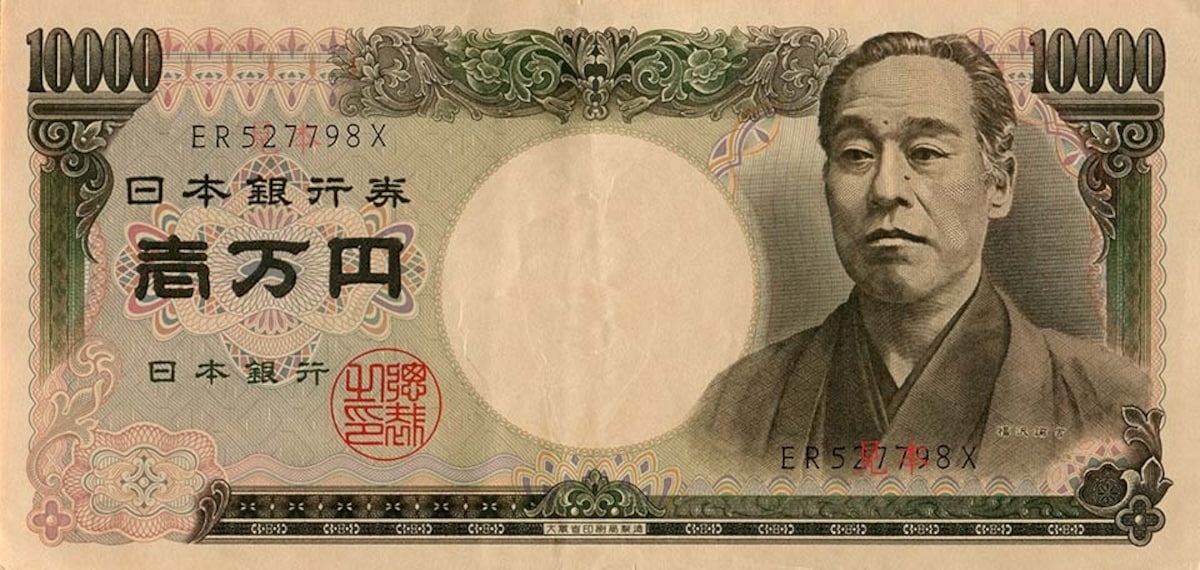All About Japanese Currency
Yen ( 円, ¥) is the legal tender in Japan, and was adopted by the Meiji government as part of the “New Currency Act” in 1871. As the third most traded currency in the foreign exchange market after the U.S. dollar and the Euro, it's important to understand the value of yen coins and notes, and to learn a little about their history!
By Bua Loy¥1 Coin
https://ja.wikipedia.org/wiki/%E3%83%95%E3%82%A1%E3%82%A4%E3%83%AB:1JPY.JPG
The ¥1 coin is the smallest denomination of Japan’s coinage. Although Japan doesn’t separate its notes and coins into dollars and cents like many other countries, it’s roughly equivalent to 1¢ or a penny. It’s made out of 100% aluminum and weighs one gram (about .03 ounces). It’s so light it even floats on water!
It’s worth mentioning the commonalities among all the coinage. Each coin has the year of production, denoted by the nengo (year name) and a number—in the case of this particular coin, Heisei 18. They also have the kanji (Chinese character) for their respective value, and nihonkoku—another way of saying Japan.
The ¥1 has a stylized “1” embossed on one side. The other side depicts a young sapling, perhaps to represent the growth of Japan.
¥5 Coin
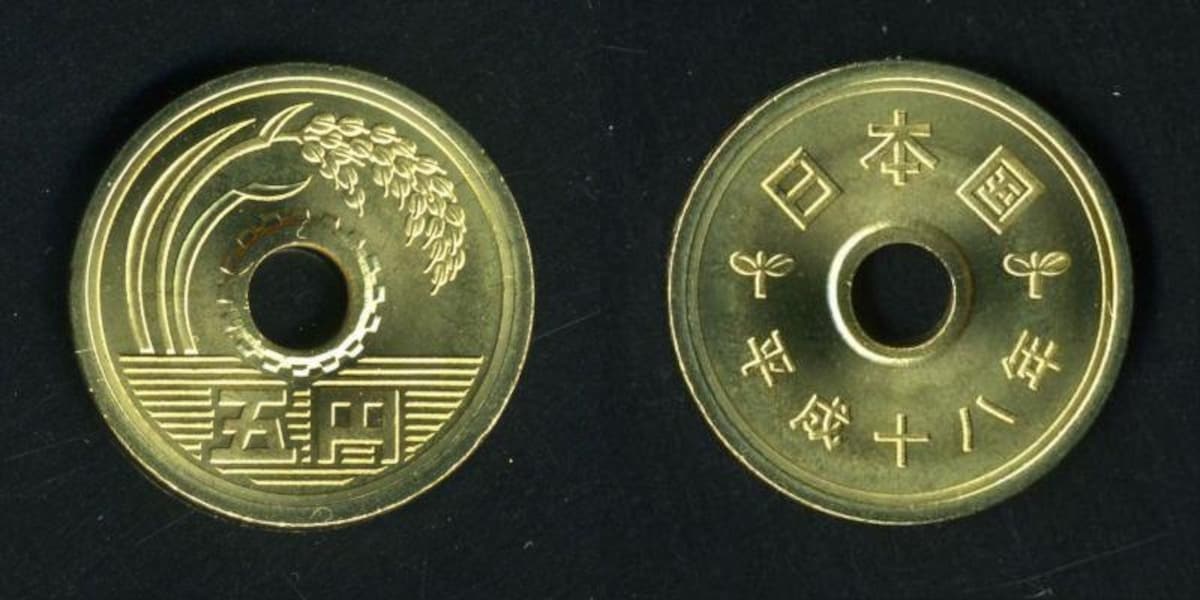
https://upload.wikimedia.org/wikipedia/commons/1/10/5JPY.JPG
Next in line is the ¥5 coin, which is worth about 5¢ or a nickel. The ¥5 is brass, made from a blend of copper and zinc, and weighs 3.75 grams (about .13 ounces). It’s easily identified by the distinctive hole in the middle. One side has the aforementioned production year and kanji, as well as a small sprout of rice. The other has a fully grown ear of rice sprouting from stylized water, with a gear-like flourish around the center hole. Perhaps this represents the importance of Japan’s farming, fishing and industry?
¥10 Coin
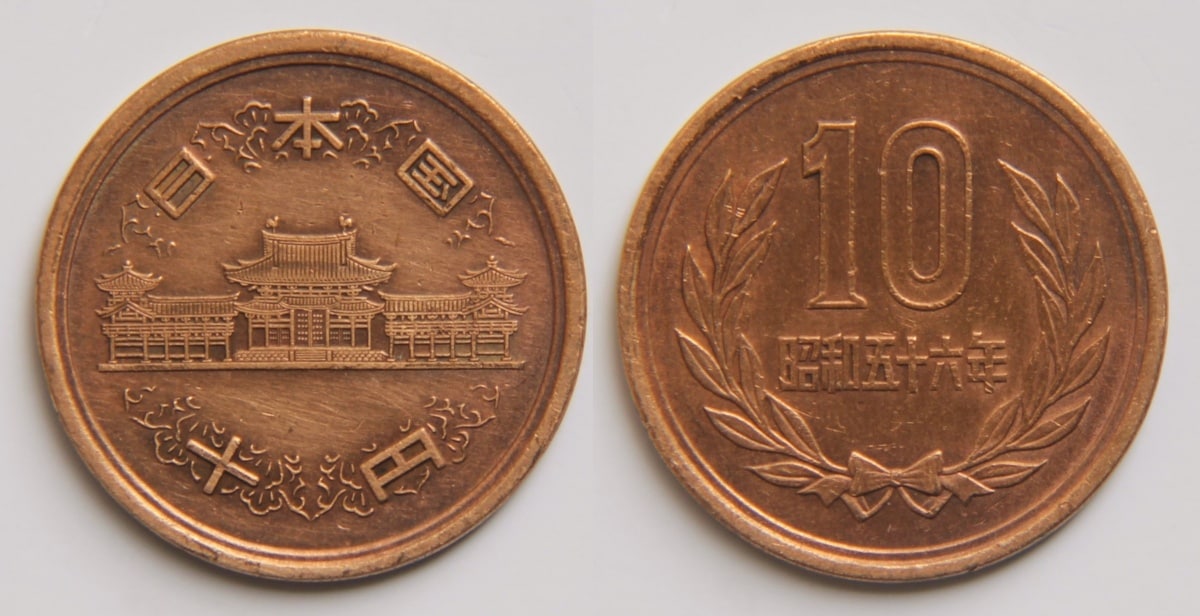
https://commons.wikimedia.org/wiki/File:10_Yen_(Japan).jpg
The ¥10 coin is bronze—another alloy of copper and zinc but with tin in the mix—and weighs 4.5 grams (about .16 ounces). One side has a “10” surrounded by laurels and the year of production. The other side has a depiction of Byodo-in, a Buddhist temple in Kyoto known as the “Phoenix Hall.” Fun fact: all ¥10 coins minted before 1959 have ridged edges!
¥50 Coin
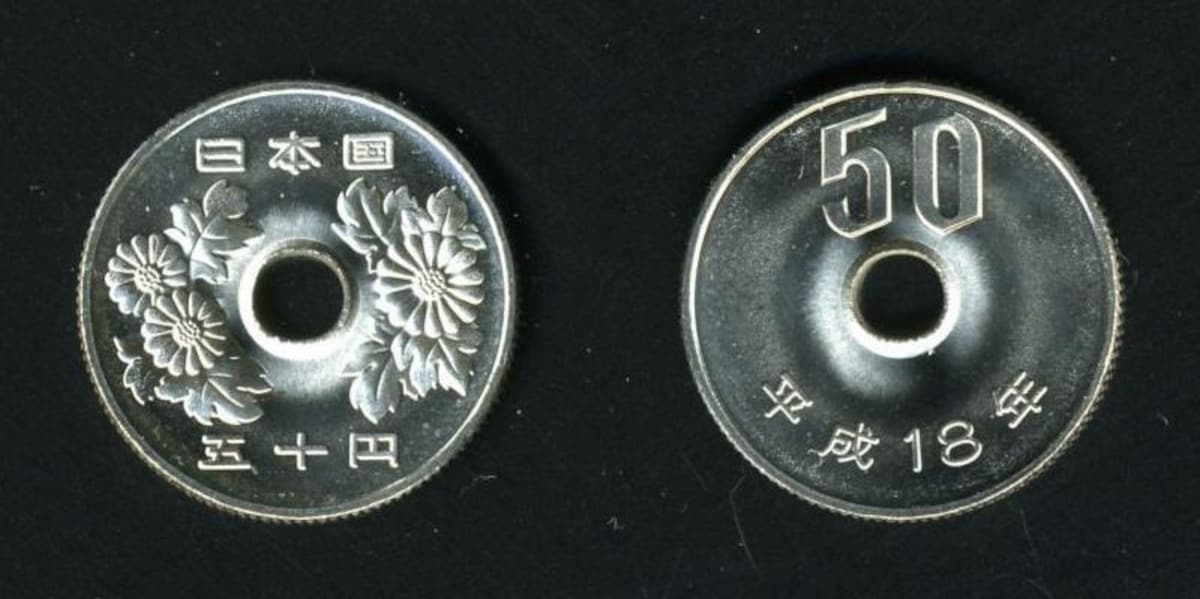
http://upload.wikimedia.org/wikipedia/commons/8/87/50JPY.JPG
A mix of copper and nickel, the ¥50 coin weighs 4 grams (about .14 ounces). This coin also has a hole in the center, which was originally added to distinguish it from the ¥100 coin to which it was similarly sized. The current design is smaller and easier to differentiate. One side is a simple “50” with the year of production. The other side has chrysanthemums viewed from above, a symbol of longevity and rejuvenation.
¥100 Coin
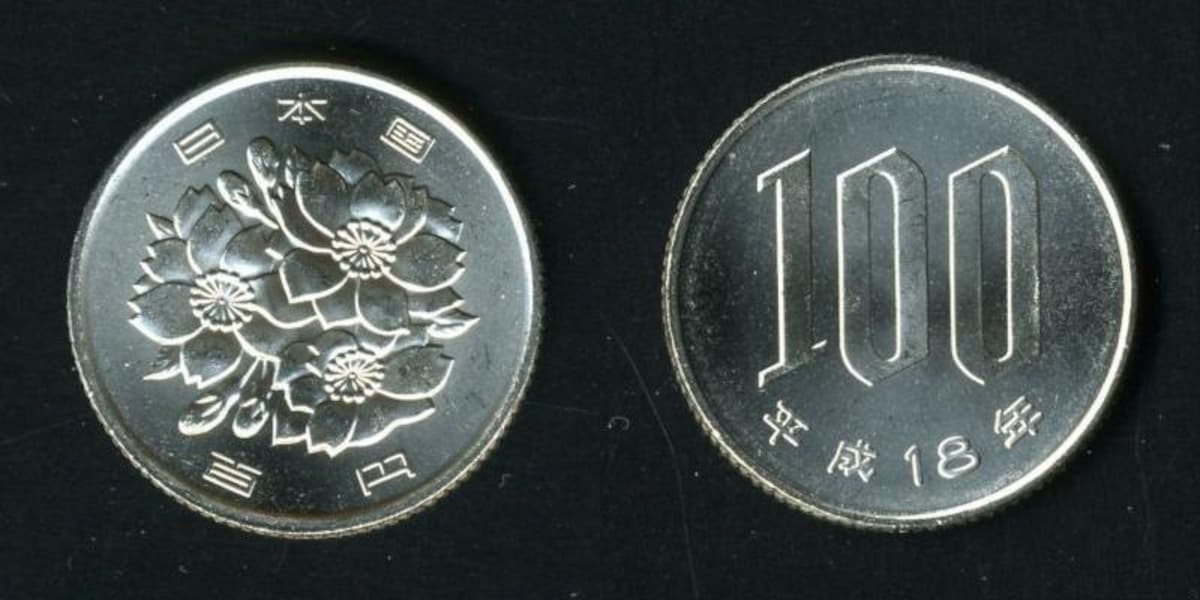
https://upload.wikimedia.org/wikipedia/commons/0/0a/100JPY.JPG
The most widely-circulated coin in Japan, the ¥100 shares the same blend of copper and nickel of the ¥50, but is slightly heavier at 4.8 grams (about .17 ounces). Its value generally ranges from 90¢ to US$1. Like the ¥50, one side is a simple “100” in Latin numerals and the year of production. The other side depicts blooming sakura cherry blossoms, an iconic symbol of Japanese spring.
https://upload.wikimedia.org/wikipedia/commons/d/d9/500JPY.JPG
The largest denomination in Japan, the ¥500 is a nickel-brass coin with some serious heft! It weighs 7 grams (about .25 ounces), which is fitting for a coin worth about US$4.60 (or €4). Its circulation led to the discontinuation of the ¥500 banknote in 1994. On one side is a prominent “500,” surrounded by bamboo and tachibana oranges. Small bars run the length of the zeros, and when viewed at an angle it displays “500円.” The other side has paulownia, a flower used as one of the official seals of the Japanese government. Be careful you don’t misplace one of these—it may be a coin, but that’s a nice chunk of change!
¥1,000 Bill
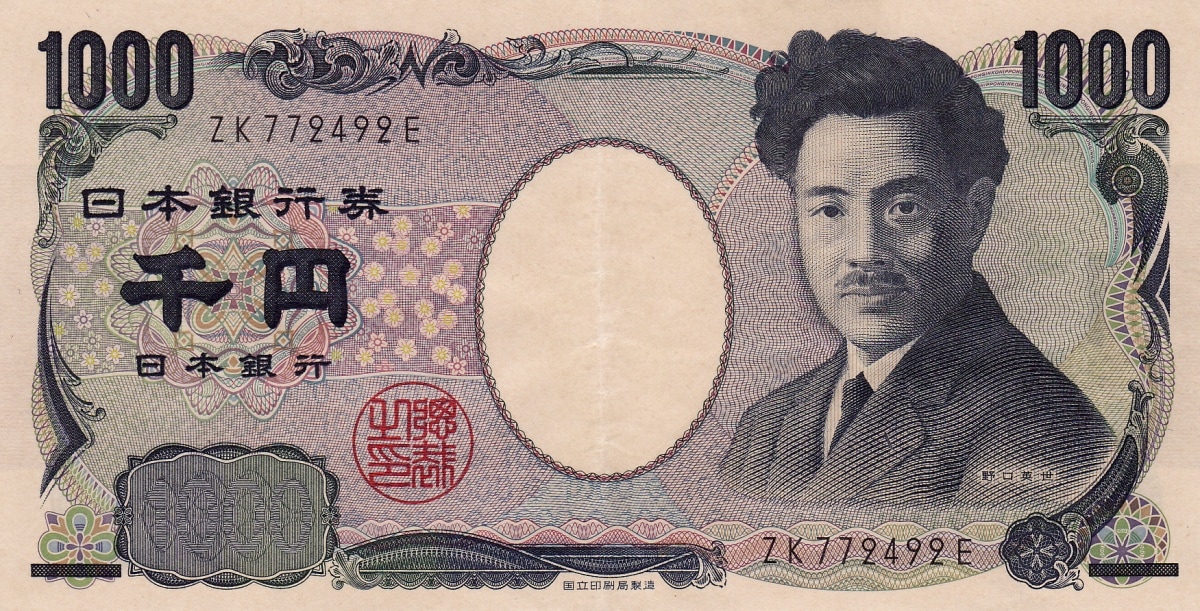
https://upload.wikimedia.org/wikipedia/commons/e/e8/1000_yen_banknote_2004.jpg
On to the banknotes! The ¥1,000 is the smallest denomination of Japanese bills, and is worth about US$9 (or €8). Japanese banknotes are all different sizes, which makes them quite easy to tell apart. The ¥1,000 is 76 x 150 millimeters (about 3 x 6 inches). On one side is the famed Japanese bacteriologist, Dr. Hideyo Noguchi. The other side is a picturesque illustration of cherry blossoms before a lake with Mount Fuji in the distance, adapted from a photograph by Koyo Okada.
¥2,000 Bill
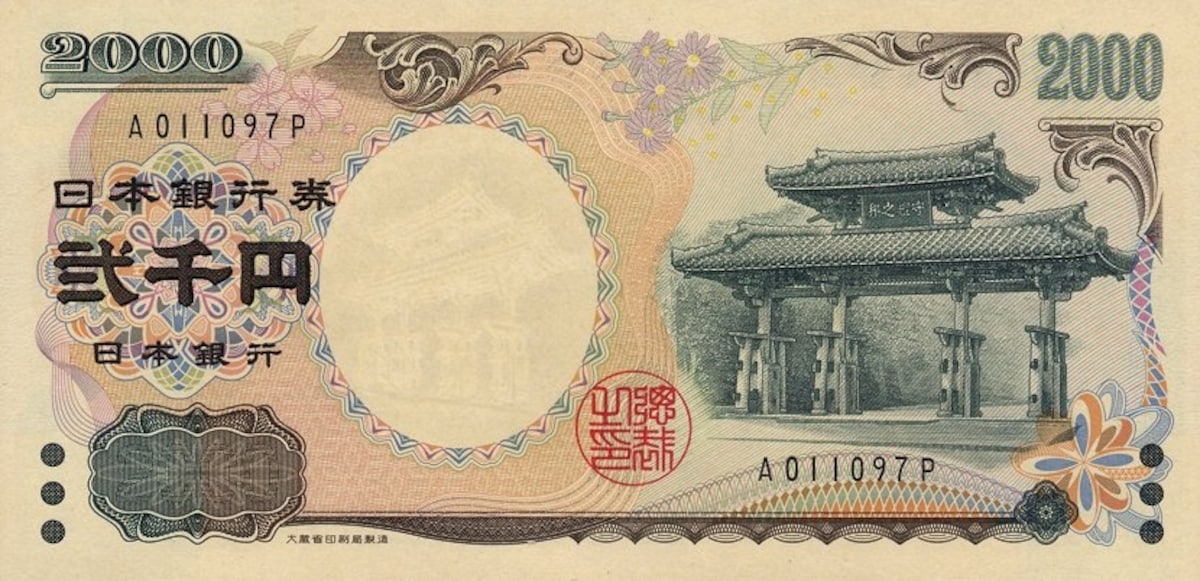
https://upload.wikimedia.org/wikipedia/commons/7/76/P103-2000Yen-%282000%29_front.jpg
The ¥2,000 note was printed in the year 2000 to commemorate the 26th G8 summit, held in Okinawa Prefecture. It’s slightly bigger than the ¥1,000 at 76 x 154 millimeters (about 3 x 6.1 inches), and is actually quite rare due to its limited printing. It's worth about US$18.25 (or €16). One side depicts the Shurei-mon Gate from Shuri Castle in Naha, Okinawa. The other side has a portrait of Murasaki Shikibu and a scene from her pivotal classic, The Tale of Genji.
¥5,000 Bill
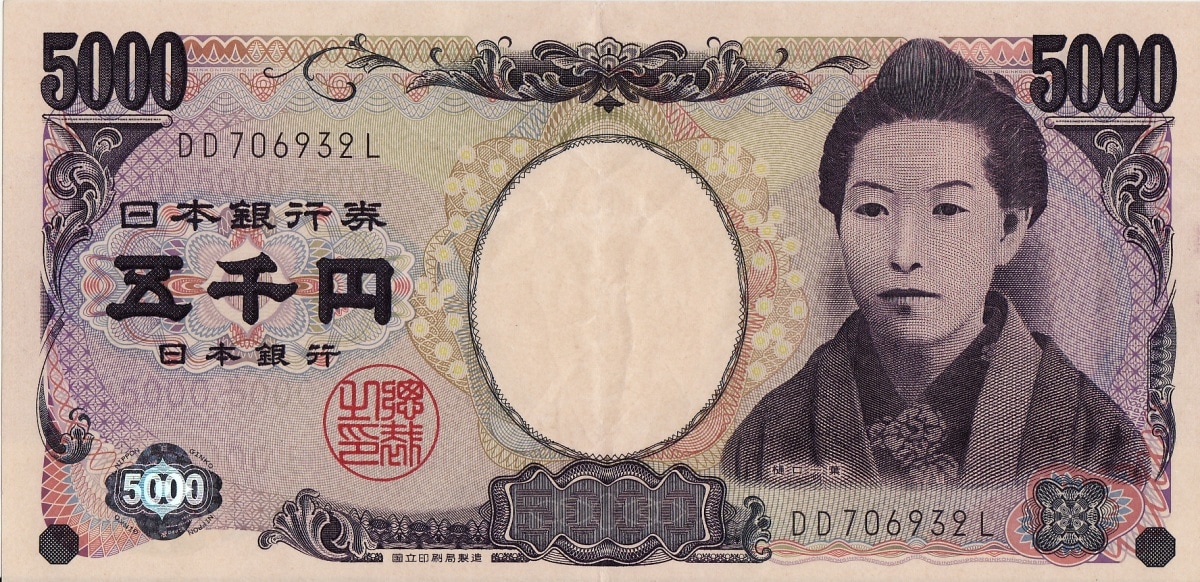
https://upload.wikimedia.org/wikipedia/commons/5/50/5000_Yenes_%282004%29_%28Anverso%29.jpg
The ¥5,000 note is the second-largest denomination, worth about US$46 (or €39). It continues the trend of minute increases, and measures in at 76 x 156 millimeters (about 3 x 6.14 inches). One side depicts Ichiyo Higuchi, a prolific short story author who rose to prominence in the Meiji Period (1868 – 1912) and was regarded for her use of classical Japanese. The other side, an illustration of kakitsubata Japanese irises, was adapted from a screen by Korin Ogata.
¥10,000 Bill
And finally, ¥10,000! As the most valuable piece of Japanese currency, it’s worth about US$91 (or about €78). It’s also the biggest, at 76 x 160 millimeters (3 x 6.3 inches). The front is a portrait of Yukichi Fukuzawa, a philosopher from the Meiji Period who founded Japan’s oldest institute of higher learning, Keio University. The back of the note is an illustration of a phoenix from the previously-mentioned Byodo-in temple in Kyoto.



